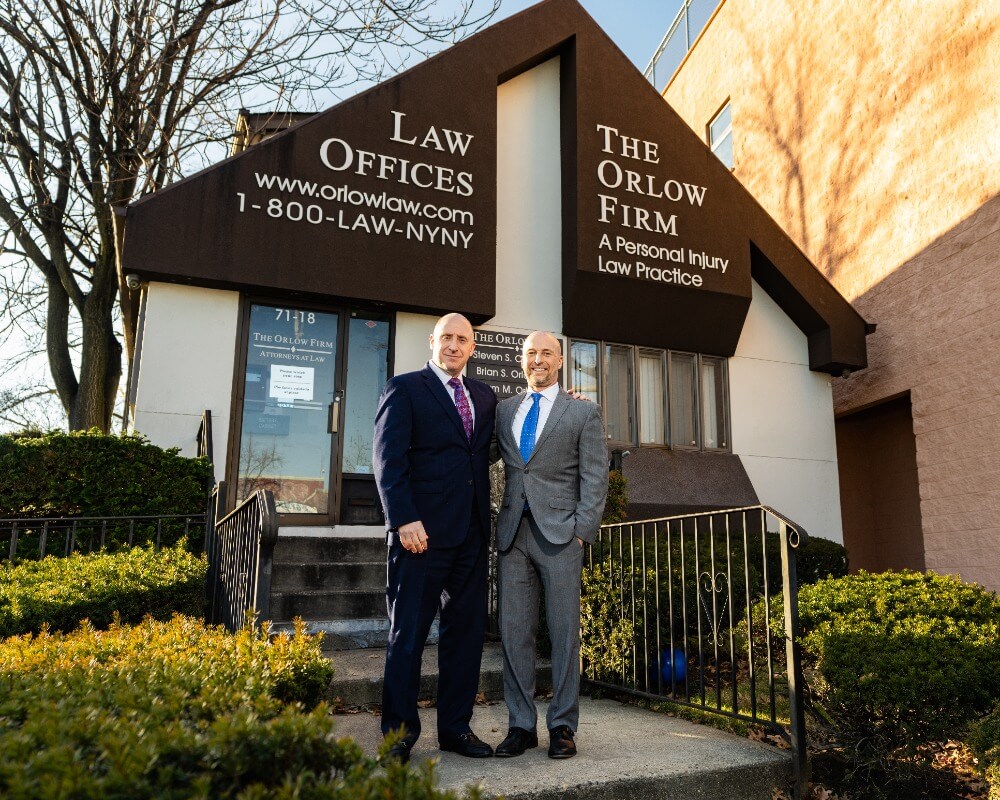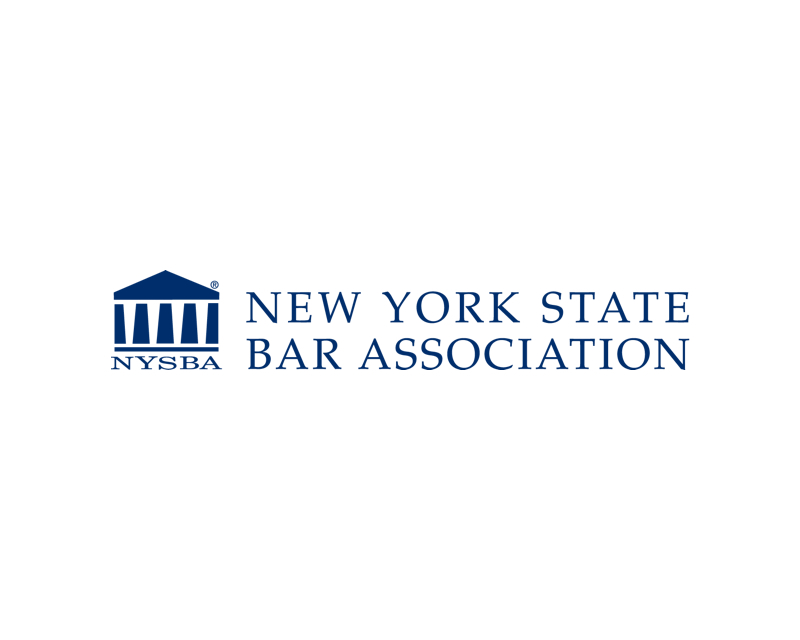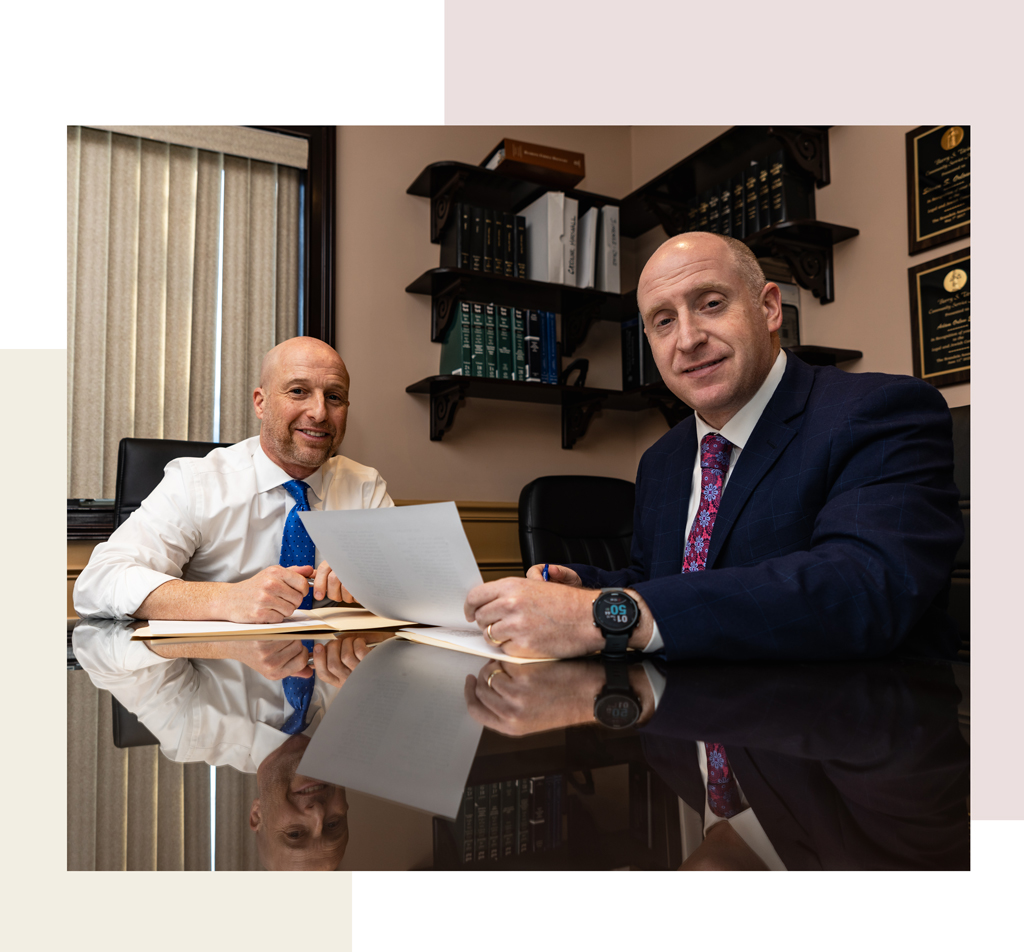Experienced Subway Accident Lawyers in New York City
If you have been injured in a subway accident, New York City Subway Accident Lawyers at The Orlow Firm are here to help. Our legal team understands the fast-paced and complex nature of New York City’s transit system. We know that subway incidents can lead to serious injuries and affect your daily life.
We represent clients across all five boroughs, from Manhattan to the outer boroughs, fighting for fair compensation when accidents occur underground. New York City’s unique subway environment creates challenges that require a strong legal response. We work to protect your rights while you focus on your recovery.
If you have questions about your case or need guidance after a subway incident, please do not hesitate to reach out. Contact us today for a free consultation at (646) 647-3398.
Why Choose Us for Your Subway Accident Claim
When you have been injured in a subway accident, you need legal help that understands the unique challenges of New York City transit. At The Orlow Firm, we offer compassionate guidance and a clear plan to protect your rights. We know the ins and outs of the NYC subway system and how local laws apply. Our team listens closely to your story and works hard to develop a strategy that fits your needs.
We stand by our commitment to personalized service and proven results. Our experience in handling diverse subway accident claims means that you get a legal team who understands borough-specific issues and the challenges of navigating NYC transit regulations. We keep our clients informed at every step and are ready to fight for full compensation.
- Local Knowledge: We understand NYC transit rules and the complexities of subway operations.
- Proven Results: We have secured substantial settlements for clients injured in subway accidents.
- Personalized Service: Our approach is tailored to meet your unique situation and needs.
- Clear Communication: We ensure you are kept up-to-date throughout the entire process.
If you have suffered a subway accident injury in New York City, you deserve a team that is ready to help you move forward. Contact us today for a free case evaluation at (646) 647-3398.
Types of Subway Accident Cases We Handle
New York City subway system accidents can vary in cause and severity. Our legal team handles a range of cases related to subways. We work to hold the responsible parties accountable when safety protocols are not met.
Below are some common types of subway accident cases:
- Slip and Fall Incidents: Cases where passengers slip due to wet platforms, debris, or poor lighting.
- Escalator and Elevator Malfunctions: Incidents caused by sudden stops, mechanical failures, or improper maintenance resulting in falls or crush injuries.
- Door and Signal Malfunctions: Injuries that occur when automatic doors fail to operate properly or when faulty signals create hazardous situations on platforms.
- Collision and Derailment Accidents: Instances where train collisions, abrupt stops, or derailments lead to severe injuries.
- Negligent Maintenance Claims: Cases arising from neglectful upkeep of tracks, platforms, or safety systems leading to dangerous conditions for commuters.
If you have been injured in a subway accident in New York City, you may be entitled to compensation. Our team is committed to helping you understand your rights and pursue a claim that covers your medical expenses, lost wages, pain, and suffering. Contact us today for a free case evaluation at (646) 647-3398.
Proven Results for Injured People
At our firm, we have a long history of recovering significant compensation for injured individuals. While every subway accident case is unique, our results in personal injury claims speak for themselves. We have secured substantial settlements and verdicts to help cover medical expenses, lost wages, and other damages. Below are some examples of our proven results from similar personal injury cases:
- $997,997: For a driver whose taxi was hit head on by a truck. He injured his back, which required surgery.
- $2.6 million: For a HVAC laborer injured when a drop ceiling fell on his head causing injuries to his back, knees, and shoulder.
- $2.875 million: In a premises liability case for a legally blind man who fell 16 feet into an open elevator shaft at his residence, resulting in back and heel injuries.
- $900,000: For a painter injured in a scaffold accident in Manhattan, where the injuries necessitated surgery.
These results demonstrate our commitment to fighting for the rights of injured New Yorkers. We work hard to secure full compensation for every client. If you have experienced a subway accident, contact us today for a free consultation at (646) 647-3398.
New York Laws and Regulations Affecting Subway Accident Claims
New York laws and regulations play a key role in subway accident claims. The city’s subway system operates under strict guidelines set by federal, state, and local authorities. These rules help ensure that the Metropolitan Transportation Authority (MTA) keeps its stations, trains, and equipment safe for riders. When a subway accident occurs, these laws can affect how liability is determined and what compensation may be available.
In New York, subway accident cases often involve claims of premises liability. Victims must show that the MTA or another party failed to meet a legal duty of care. This duty may include maintaining tracks, platforms, and other public areas in safe condition. The law also outlines the proper steps for reporting an incident and preserving evidence related to the accident.
Subway accident claims are also affected by state and city regulations. For example, strict timelines are set by the statute of limitations in New York, which requires injured parties to file a lawsuit within a specific period. Additionally, New York’s sovereign immunity rules can impact the process of filing a claim against a public entity like the MTA. These legal rules are complex, and they require a careful review of the facts of each case.
New York City has safety protocols that guide routine maintenance and emergency response on the subway system. Compliance with these protocols is critical. When an accident occurs, investigators look at whether these protocols were followed and if any procedures were overlooked. This process is essential in determining negligence and in guiding the eventual outcome of a claim.
To better understand how these regulations affect your claim, consider these key legal points:
- Regulation: The MTA must follow federal, state, and local guidelines to ensure rider safety.
- Maintenance Standards: Laws require regular inspections and prompt repairs to avoid hazards.
- Statute of Limitations: Claims must be filed within a set time period, and delays can limit your ability to recover damages.
- Sovereign Immunity: Special rules apply when filing claims against public entities like the MTA.
These legal requirements ensure that each subway accident claim is thoroughly evaluated according to the law. They also help protect the rights of injured passengers while holding the responsible parties accountable for their negligence.
Navigating these laws and regulations can be challenging. If you have been injured in a subway accident in New York City, it is important to understand your rights and the legal options available to you. Our team is committed to guiding you through this process with care and diligence.
For a free consultation or free case evaluation, please call (646) 647-3398 today.
Common Causes of Subway Accident Incidents
Common causes of subway accident incidents in New York City can be diverse and complex. Injured passengers may suffer due to a range of factors, many of which can occur unexpectedly in the fast-paced environment of the city’s transit system. Understanding these factors is crucial when pursuing a subway accident claim.
Below is an overview of common causes associated with subway accident incidents:
- Equipment Malfunctions: Failures in braking systems, door mechanisms, or signaling equipment can lead to dangerous situations.
- Poor Maintenance: Neglected upkeep of tracks, platforms, stairs, or escalators may result in hazards that cause accidents.
- Operator Error: Mistakes by train operators or control center personnel, such as miscommunication or delayed reactions, can contribute to collisions or abrupt stops.
- Inadequate Safety Measures: Lack of proper crowd control or safety barriers on platforms can lead to injuries during rush hours or emergency situations.
- Infrastructure Defects: Design flaws or aging infrastructure in certain stations or tunnels may increase the risk of accidents.
- Weather Conditions: Heavy rain, snow, or other adverse weather can affect track conditions and escalate the danger of slips and falls.
If you or a loved one has been injured in a New York City subway accident, it is important to understand your rights and options. Contact our firm for a free case evaluation today at (646) 647-3398.
Common Injuries in Subway Accident Cases
Subway accidents in New York City can result in many types of injuries. These accidents may occur due to sudden stops, collisions, or falls on busy platforms and trains. Injured victims may face physical, emotional, and long-term challenges that affect their daily lives and work.
Below is a list of common injuries that may result from subway accidents:
Subway incidents often lead to serious harm. The following injuries are among the most frequently reported by victims:
- Traumatic Brain Injuries: Concussions and other head injuries resulting from collisions or falls.
- Spinal Cord Injuries: Damage to the spine that can lead to chronic pain or loss of mobility.
- Fractured or Broken Bones: Injuries to limbs or other bones that may require surgery and extensive rehabilitation.
- Soft Tissue Injuries: Sprains, strains, and bruises caused by abrupt impacts during an accident.
- Internal Injuries: Damage to organs which may require prompt and sometimes long-term medical treatment.
- Emotional Trauma: Anxiety, post-traumatic stress disorder, and other psychological effects that can follow a distressing accident.
If you or a loved one has sustained injuries in a subway accident, it is important to seek both medical attention and legal guidance immediately. Contact our legal team for a free consultation to discuss your case and explore your options. Call now at (646) 647-3398 to schedule your free case evaluation.
Steps to Take After a Subway Accident Incident in New York City
After a subway accident in New York City, it is important to act quickly. Taking the right steps can protect your rights and strengthen your personal injury claim. Be sure to follow these guidelines immediately after your accident:
- Seek Medical Attention: Even if you believe your injuries are minor, get checked by a medical professional as soon as possible. This is important for your health and for documenting your injuries.
- Document the Scene: Take clear photos or videos of the accident area, your injuries, and any hazards that contributed to the incident. This visual evidence can be valuable for your claim.
- Report the Incident: Notify subway authorities or emergency services about the accident. Ask for a copy of any report they file for your records.
- Collect Witness Information: Speak with any witnesses and obtain their names and contact details. Their statements may help support your case later.
- Avoid Social Media Exposure: Do not post details or photos of your accident or injuries online. Statements made online can sometimes be used against you later in your case.
- Contact a Subway Accident Lawyer: Reach out to a qualified New York City subway accident lawyer right away. They will help preserve evidence and guide you through the legal process to protect your rights.
Following these steps after your accident is vital to building a strong personal injury claim. If you or a loved one has been injured in a subway accident, contact our legal team today for a free consultation. Let us help you get the justice you deserve. Call now at (646) 647-3398.
Establishing Liability in Subway Accident Cases
Establishing liability in subway accident cases can be challenging. In New York City, several factors may play a role in proving negligence. Determining which party is at fault—be it the MTA, a contractor, or another responsible entity—requires a careful review of all evidence. Our legal team works to gather maintenance records, witness statements, and experienced opinions to build a strong case. We help injured clients navigate these complexities with care.
Below are the key elements that often must be established in a subway accident case:
- Duty of Care: The entity responsible for operating or maintaining the subway must meet strict safety standards to protect riders.
- Breach of Duty: A failure to adhere to these safety standards, such as poor maintenance or ineffective safety protocols, can indicate negligence.
- Causation: Evidence must show that the breach of duty directly led to your accident and injuries.
- Damages: Clear documentation of your injuries, medical expenses, lost wages, and other losses is essential to support your claim.
If you have been injured in a subway accident, understanding these elements is vital. Our legal team is here to help you investigate your case and establish liability. Call us today for a free consultation at (646) 647-3398.
Damages You Can Recover
Damages you can recover in a New York City subway accident claim cover a range of losses that you may have suffered. When you are injured in a subway accident, you may be entitled to compensation for both economic and non-economic losses. Recovery can help ease the financial burden and support your recovery process.
Below are some common types of damages that may be available in a subway accident case:
- Medical Expenses: Coverage for hospital stays, surgeries, medications, physical therapy, and any necessary future treatment.
- Lost Wages & Future Earnings: Compensation for income lost while recovering and for reduced earning capacity due to your injuries.
- Pain & Suffering: Damages for the physical pain and emotional distress you have endured.
- Emotional Distress: Recovery for anxiety, depression, and other psychological impacts caused by the accident.
- Property Damage: Reimbursement for any personal belongings or property damaged during the incident.
- Rehabilitation & Long-Term Care: Coverage for ongoing care, therapy, and adaptations required for long-term recovery.
Each case is unique. We review all damages linked to your injury, including both immediate losses and future needs. If you have been hurt in a subway accident, do not wait to protect your rights. Contact us for a free case evaluation and let our team help you understand the full extent of your potential recovery. Call now at (646) 647-3398.
How We Maximize Compensation for Subway Accident Victims
At our firm, we work hard to ensure that every subway accident victim receives full and fair compensation. We understand that accidents in New York City’s subway system can cause severe injuries, lost wages, and significant emotional distress. Our approach is built on a detailed review of every aspect of your case to unlock all available recovery options.
We use a step-by-step process designed to build a strong case on your behalf. Our method combines thorough investigation, careful documentation, and aggressive negotiation. This approach helps us uncover all sources of compensation and ensures you get the benefits you deserve. Below are key factors we focus on:
- Comprehensive Investigation: We collect detailed evidence, including photos, video recordings, and witness statements, to establish a clear picture of the accident.
- Thorough Case Evaluation: We review police reports, maintenance records, and safety protocols to determine liability and identify all responsible parties.
- Medical Documentation: We work with healthcare providers to gather complete records, ensuring every injury and its long-term impact is well documented.
- Calculation of Damages: We consider loss of income, future medical expenses, and pain and suffering to calculate the true value of your case.
- Aggressive Negotiation: We handle all negotiations with subway authorities and insurance companies to secure the maximum compensation available.
Our team is dedicated to fighting for your rights and restoring your quality of life. If you have been injured in a subway accident, contact us for your free case evaluation. Let our experienced attorneys help you navigate the legal process and recover the full compensation you deserve. Call us today at (646) 647-3398.
Statute of Limitations and Deadlines in New York
For subway accident cases in New York City, time is critical. Filing your claim within the proper timeframe is vital to secure the compensation you may be entitled to. Failing to file on time may bar you from pursuing your case. It is important to understand the deadlines that apply to your situation.
Below are key time limits you should know:
- Personal Injury Claims: Generally, you have three years from the date of the accident to file a lawsuit.
- Wrongful Death Claims: If your claim involves a wrongful death, you typically must file within two years of the loss.
- Claims Against Government Entities: When filing a claim against a public entity, strict notice requirements may require you to take action as early as 90 days after the accident.
Meeting these deadlines is essential. Each case may have unique circumstances that can affect these time limits. Contacting a knowledgeable attorney promptly ensures that all deadlines are met and that your rights remain protected.
If you have questions about the statute of limitations for your subway accident claim or need help filing your case on time, please call us for a free consultation at (646) 647-3398.
Local Resources in New York City
If you have been injured in a subway accident in New York City, access to local resources can help you understand your options and support your recovery. Local agencies and public services can provide important information and assistance as you build your claim. Below are several resources that may prove useful:
The following local resources offer assistance in areas such as transit information, emergency services, and public safety:
- NYC MTA: For transit updates, accident reports, and service alerts, visit the official website at Visit Website.
- NYPD Precinct: For police reports and incident documentation, your local NYPD precinct can help. Learn more at Visit Website.
- NYC Health + Hospitals: To find emergency care, trauma centers, and medical assistance, explore resources at Visit Website.
- NYC Department of Transportation: For information on subway station safety and infrastructure projects, visit their site at Visit Website.
- New York City Official Website: For a broader look at city services and support after an accident, access helpful information at Visit Website.
These local resources can help you obtain vital information and support following a subway accident. If you have questions or need dedicated legal guidance to protect your rights, please contact us for a free case evaluation. Call us today at (646) 647-3398.
Frequently Asked Questions
- How long do I have to file a subway accident claim?: In New York, you typically have three years to file a personal injury lawsuit. Some cases involving public entities may have shorter deadlines.
- What if I was partially at fault?: New York follows the comparative negligence rule. Even if you share some responsibility, you may still recover compensation, though it may be reduced based on your degree of fault.
- What types of damages can I recover?: You may be eligible for compensation for medical expenses, lost wages, pain and suffering, rehabilitation costs, and other losses related to your injuries.
- Do I need a lawyer for my subway accident claim?: A personal injury attorney can help you navigate complex legal issues and protect your rights throughout the claims process.
- What should I do immediately after a subway accident?: It is important to seek prompt medical attention, preserve evidence by documenting the scene and your injuries, and contact an attorney as soon as possible.
If you have additional questions or need guidance on your subway accident claim, please contact our office for a free consultation. Our compassionate team is ready to help you secure the compensation you may be entitled to. Call us today at (646) 647-3398.
Contact Us for a Free Consultation
If you have been injured in a New York City subway accident, you deserve compassionate and strong legal guidance. Our team has the experience to help you navigate a complex claim while fighting for your rights. We understand that subway incidents can leave you with serious injuries and unexpected costs. We are here to support you through every step of the process.
Your case is unique, and we offer a free consultation to discuss your situation. During your consultation, we will listen to your story, review the facts, and explain your rights under New York law. We work on a contingency basis, which means you pay nothing unless we recover compensation for you.
We are ready to help you file your subway accident claim and work to secure the benefits you deserve. If you have questions or need an evaluation of your case, please do not hesitate to contact us.
Call us today at (646) 647-3398 for a free case evaluation and take the first step towards recovery.











